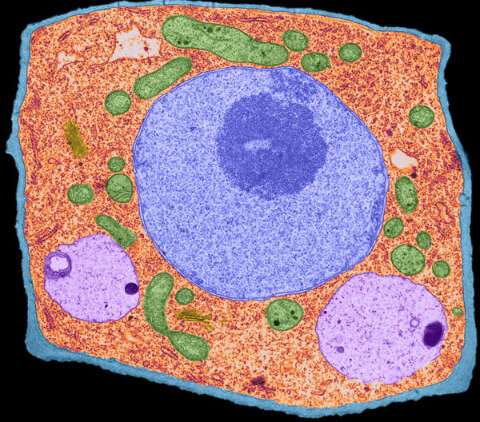This article has been reviewed according to Science X's editorial process and policies. Editors have highlighted the following attributes while ensuring the content's credibility:
fact-checked
peer-reviewed publication
trusted source
proofread
Lipid making in plants involves the cooperation of two organelles, study finds

Two enzymes that plants need to make oils live in different organelles, a pair of RIKEN researchers has found. This finding will help inform efforts to tweak the metabolism of plants to boost their production of oils, which can be used as biofuels among other things.
As well as forming the building blocks for the cell membranes of plants, membrane lipids are the precursors for the oils stored in seeds. They are thus attracting attention in research looking into modifying plant metabolism to boost the production of industrially useful oils.
"Oil is the main storage lipid of seeds and is not only important for plant growth, but also as a raw material for various industrial products, including biodiesel," explains Yuki Nakamura of the RIKEN Center for Sustainable Resource Science (CSRS). "Since oils are derived from sugars produced from carbon dioxide in the atmosphere through photosynthesis in plants, research into lipids is expected to contribute to biomanufacturing, which will help to realize a low-carbon society."
Oils are formed in the endoplasmic reticulum—a large structure in plant cells that performs multiple functions. A key step in lipid synthesis is catalyzed by an enzyme known as phosphatidic acid phosphatase. It has a dozen or so different forms that have slightly different sequences of amino acids, but it wasn't known which of these forms are essential for lipid synthesis.
Now, Nakamura and Van Nguyen, also at the CSRS, have shown that two forms of phosphatidic acid phosphatase, LPPα2 and LPPα1, are required to make lipids in thale cress. The research is published in The Plant Cell.
When the researchers knocked out the genes that code for LPPα2 and LPPα1, the resulting plants didn't survive.
In a surprising twist, the researchers found that the forms don't reside in the same organelles: LPPα2 is in the endoplasmic reticulum, whereas LPPα1 is found nearby in chloroplasts—the site where photosynthesis occurs. "It makes sense that one enzyme is in the endoplasmic reticulum, because that is where the pathway is happening, but we don't yet know why the other enzyme is in the chloroplast," comments Nakamura.
This finding implies that the two organelles have to talk to each other in order to produce lipids—something that Nakamura is keen to explore in the future.
The discovery was particularly gratifying for Nakamura as it answers a question he had while completing his Ph.D. about 15 years ago. "I'm very happy with this finding because it resolves a question that's been nagging at me for a very long time," he says.
More information: Van C Nguyen et al, Distinctly localized lipid phosphate phosphatases mediate endoplasmic reticulum glycerolipid metabolism in Arabidopsis, The Plant Cell (2023). DOI: 10.1093/plcell/koad021
Journal information: Plant Cell
Provided by RIKEN





















